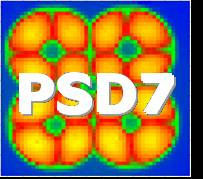Dr
Wasi Faruqi
(MRC Lab.Molec.Biology, Cambridge,UK)
14/09/2005, 09:00
Novel Photon Detection Systems
Invited Talk
Examples of applications of pixel detectors in several areas of the life sciences
will be presented with emphasis on x-ray and electron scattering and some
comparisons between the two techniques.
Dr
Keith Mathieson
(University of Glasgow)
14/09/2005, 09:30
New Techniques for Positron Emission Tomography
Contributed Talk
Degenerative photoreceptor diseases, such as age-related macular
degeneration and re-
tinitis pigmentosa, are the most common causes of blindness in the
western world. A
potential cure is to use a microelectronic retinal prosthesis to
provide electrical stimu-
lation to the remaining healthy retinal cells. Due to the success of
cochlear implants in
restoring hearing to the...
Mr
Gerard Turk
(University of Liverpool)
14/09/2005, 09:45
New Techniques for Positron Emission Tomography
Contributed Talk
An orthogonal strip
HPGe detector has been manufactured by Ortec. The dimensions of the
crystal are 60 × 60 × 20 mm. The crystal is electrically divided
into 12 strips of a 5 mm width on both sides of the detector.
Combined with digital electronics and pulse shape analysis (PSA),
the detector has the potential to reduce the position resolution to
1 mm3. The improvement of position...
Dr
Paul Soler
(University of Glasgow)
14/09/2005, 10:00
Novel Photon Detection Systems
Contributed Talk
Hybrid Photon Detectors (HPD) have been chosen for the Ring Imaging
Cherenkov (RICH) detectors of the LHCb experiment. Photons impinging
on a multi-alkali S20 photo-cathode deposited on a quartz window
produce photo-electrons that are accelerated by a 20 kV potential
onto a silicon pixel sensor anode. The sensor is segmented into 8192
pixels of size 0.0625 mm x 0.5 mm that are...
Mr
Kaori Hattori
(Cosmic Ray Group, Dept. of Physics, Kyoto Univ.)
14/09/2005, 10:15
New Gas-based Tracking Detectors
Contributed Talk
We are developing a micro-Time Projection Chamber (micro-TPC) based
on a micro-pixel chamber (μ-PIC). A Micro-TPC is employed for an
electron-tracking Compton camera [1,2].
A μ-PIC is a fine pixel-type two-dimensional imaging detector with a
pixel pitch of 400μm and it has a detector area of 10×10cm2. We
achieved a maximum gas gain of 15,000 and stable operation over
1,000 hours...
